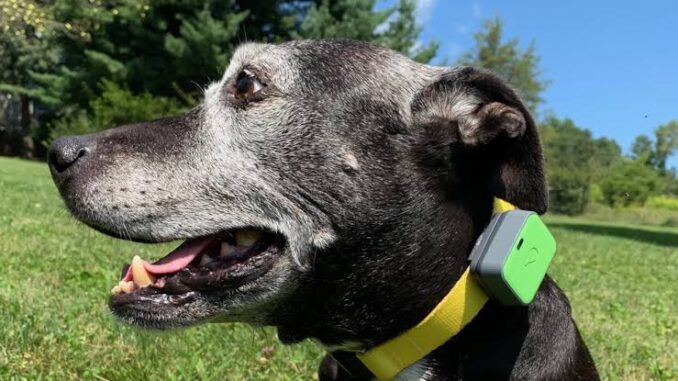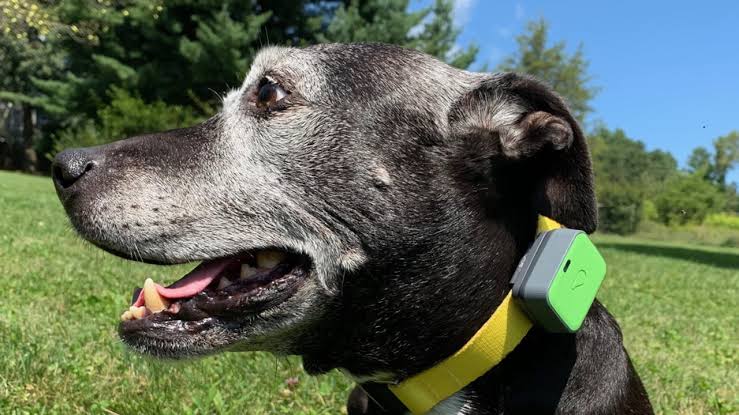
The Best Pet Tracking Devices for Dogs and Cats: For any loving pet parent, the thought of a beloved dog or cat getting lost is heartbreaking. Whether they’re curious adventurers, anxious escape artists, or just slip out the door unnoticed, pets can go missing in seconds. Thankfully, technology now provides peace of mind with pet tracking devices tools that let you monitor your pet’s location in real time.

This in-depth guide will walk you through everything you need to know about pet trackers for dogs and cats, from how they work and what features to look for, to reviews of the best models available in 2025.
Why Pet Tracking Devices Matter
Every year, millions of pets go missing. According to the American Humane Association, 1 in 3 pets will become lost at some point in their life.
Microchips are helpful—but only if your pet is found and scanned. Pet trackers allow real-time tracking, letting you actively find your pet instead of waiting for a call from a shelter.
Key Reasons to Use a Pet Tracker:
- Real-time GPS location tracking
- Alerts if your pet leaves a designated safe zone
- Activity monitoring for health insights
- Peace of mind when traveling or during storms
- Increased chances of safe recovery
Types of Pet Trackers
Not all pet trackers are the same. Some use GPS, others rely on Bluetooth or even radio frequency. The right one for your pet depends on how far they roam, their size, and your budget.
A. GPS Trackers
These are the most popular and accurate. GPS pet trackers use satellites and cellular networks to pinpoint your pet’s location in real time.
- Best For: Dogs or cats that roam large areas
- Range: Unlimited (as long as there’s cell signal)
- Subscription Fee: Usually required
B. Bluetooth Trackers
Bluetooth trackers like Tile or AirTag use proximity tracking—ideal for finding pets hiding indoors or nearby.
- Best For: Indoor pets or short-range recovery
- Range: 100–300 feet
- Subscription: Usually not required
C. Radio Frequency (RF) Trackers
Old-school trackers that use radio signals. No GPS or cell service required, but range and accuracy are limited.
- Best For: Remote areas with poor cellular coverage
- Range: 0.5 to 1 mile
- Subscription: No
Key Features to Consider
When choosing a pet tracking device, prioritize the following features:
| Feature | Why It Matters |
|---|---|
| Real-Time Location Tracking | Instantly see where your pet is on a map. |
| Geofencing | Set virtual boundaries and receive alerts if your pet leaves. |
| Battery Life | Longer battery life means less frequent charging. |
| Size and Weight | Lightweight designs are important, especially for cats or small dogs. |
| Water Resistance | Essential for outdoor pets and rainy weather. |
| Subscription Plans | GPS trackers often require monthly service fees. |
| Durability | Should withstand rough play, biting, or rain. |
| Activity Monitoring | Helps track health metrics like steps or rest time. |
Best Pet Tracking Devices for Dogs and Cats (2025 Review)
Let’s explore the top-rated pet trackers currently available, broken down by category.
Best Overall: Tractive GPS Tracker for Dogs and Cats
Price: ~$50
Subscription: Required (starts at $5/month)
Weight: 1.2 oz
Battery Life: 3–7 days
Features:
- Real-time GPS tracking
- Unlimited range
- Set geofences (virtual fences)
- Activity and fitness tracking
- Works in 175+ countries
Pros:
- Affordable hardware
- Lightweight and waterproof
- Excellent app interface
- Multi-pet support
Cons:
- Requires subscription
- Slight delay in signal when underground or indoors
Best for Dogs: Fi Smart Dog Collar Series 3
Price: ~$150
Subscription: Optional, but recommended ($5–$10/month)
Battery Life: Up to 3 months (on standby)
Features:
- Built-in GPS and LTE
- Escape alerts
- Step and sleep monitoring
- Lost dog mode with LED light
- Rugged, chew-proof build
Pros:
- Longest battery life among GPS trackers
- Stylish collar design
- Great for active, outdoor dogs
Cons:
- Heavier than some trackers (not ideal for very small dogs)
- Higher upfront cost
Best for Cats: Jiobit Smart Tag
Price: ~$130
Subscription: Required (starts at $8.99/month)
Weight: 0.8 oz
Battery Life: 7–10 days
Features:
- GPS + cellular + Wi-Fi + Bluetooth
- Real-time location tracking
- Trusted places and caregivers
- SOS mode
Pros:
- One of the smallest GPS trackers
- Great for indoor-outdoor cats
- Secures well to collars or harnesses
Cons:
- Requires subscription
- Initial setup takes time
Best with No Subscription: Findster Duo+
Price: ~$150
Subscription: None
Battery Life: 3 days
Range: 0.75 mile urban / 3 mile rural
Features:
- GPS and proprietary RF communication
- No cellular needed
- Activity tracking
- Multi-pet tracking
Pros:
- No monthly fees
- Works offline
- Great for rural areas or hikes
Cons:
- Shorter battery life
- Limited range
Best for Short-Range Tracking: Apple AirTag (Cats & Dogs)
Price: ~$29
Subscription: No
Range: ~300 feet
Battery: 1-year (replaceable)
Features:
- Uses Apple’s Find My network
- Works best in populated areas with many Apple users
- Audible chime
Pros:
- Tiny and lightweight
- No monthly fees
- Affordable
Cons:
- Not GPS-based
- Limited to proximity or recent location
- Works only with iPhones
READ ALSO: Top Pet Dental Care Products for Dogs and Cats
Pros and Cons of GPS Pet Trackers
| Pros | Cons |
|---|---|
| Real-time tracking | Monthly fees required |
| Instant alerts for escape | Requires cell or GPS signal |
| Encourages activity monitoring | Some models are bulky |
| More peace of mind during travel | Limited battery life |
While no device guarantees a lost pet’s return, GPS trackers drastically improve the odds—especially when combined with microchips and collar tags.
FAQs
What’s the difference between GPS and Bluetooth pet trackers?
GPS trackers offer long-range, real-time tracking via satellite and cellular networks, ideal for pets that roam far.
Bluetooth trackers work at short range (100–300 feet) and are best for indoor or backyard use.
Do I need a subscription for a pet GPS tracker?
Most GPS-based trackers require a monthly subscription to cover cellular data costs. Prices range from $5–$10/month. Some models like Findster Duo+ or AirTags have no fees but offer limited features.
Are pet trackers safe for my animal?
Yes most trackers are designed to be pet-safe, lightweight, and waterproof. However, always check the weight and attachment method. A tracker that’s too bulky can irritate small pets.
Can I use AirTags on pets?
Technically yes, and many people do—but Apple does not officially recommend AirTags for pet tracking, as they’re not GPS devices. They rely on proximity to other Apple devices.
What’s the best tracker for small cats?
The Jiobit Smart Tag or Tractive GPS Cat Tracker is ideal due to its compact design, secure collar clips, and real-time GPS.
Do trackers work if my pet is indoors?
Yes, but GPS signals can be weaker indoors. Wi-Fi-enabled or Bluetooth-supported trackers (like Jiobit or Fi) help bridge gaps in indoor tracking.
What happens if my pet leaves a GPS signal area?
If the tracker loses GPS or cellular service, it may not provide accurate real-time updates until it reconnects. RF trackers like Findster may work better in areas without cell coverage.
Are GPS trackers waterproof?
Most modern trackers are water-resistant or waterproof. Devices like Fi, Tractive, and Jiobit have IP67 or IP68 ratings, making them safe for rain, splashes, and shallow water.
Can I track multiple pets with one account?
Yes. Most apps like Tractive, Fi, or Whistle allow you to manage multiple pets from a single account, though each will need its own tracker.
Are GPS trackers better than microchips?
They serve different purposes. A microchip is a permanent ID that helps reunite you with your pet after someone finds them. A GPS tracker helps you find them immediately. Ideally, use both.
Leave a Reply
You must be logged in to post a comment.